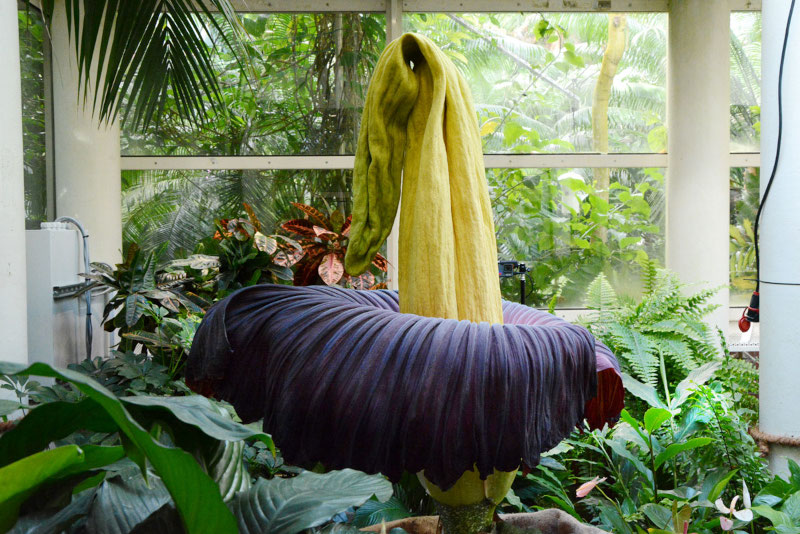The Corpse Flower Has Bloomed

05 08 2025
The University of Warsaw Botanical Garden is the only place in Poland where the blooming of the corpse flower (Amorphophallus titanum) has been successfully achieved. This extraordinary event took place here for the second time!
The corpse flower belongs to the arum family (Araceae) and grows naturally in the rainforests of Sumatra. Its inflorescence, considered the largest in the world, can reach up to 3.5 meters in height. In cultivation, it tends to be slightly shorter but remains impressive — usually growing to around 2.5 meters, though even taller specimens are sometimes recorded. The flower is surrounded by a large, deep cherry-colored spathe.
Just before blooming, the inflorescence raises its temperature to better disperse its scent. While unpleasant to humans, the odor attracts carrion-loving flies, beetles, and wasps. These insects, lured by the scent of rotting meat, flock to the flower and help it achieve successful pollination. The female flowers open first, followed by the male flowers once the female ones have withered. All the individual flowers are tiny, and the insects carry pollen from the male flowers to the stigmas of female flowers on another plant. As a result, pollination occurs, and red fruits develop, whose seeds are dispersed by the rhinoceros hornbill.
The plant blooms for the first time about ten years after germination, with subsequent blooms occurring every 3–6 years. The curator of the greenhouse plant collection at the University of Warsaw Botanical Garden is Piotr Dobrzyński.
For those who could not witness the bloom in person, a live stream is available here:
https://www.youtube.com/live/XEmu5dNQq8c?si=spQ6tQ0ivrX2UKIQ